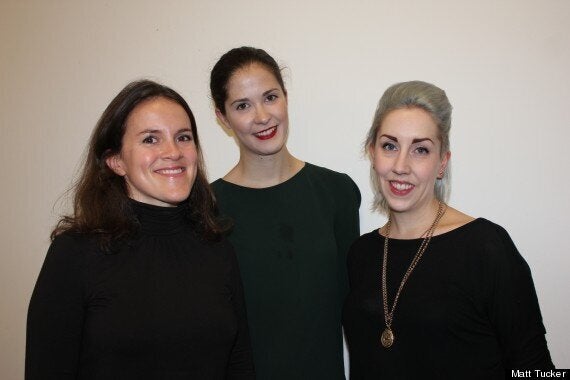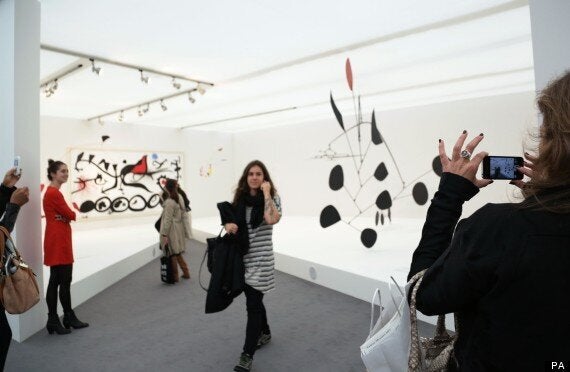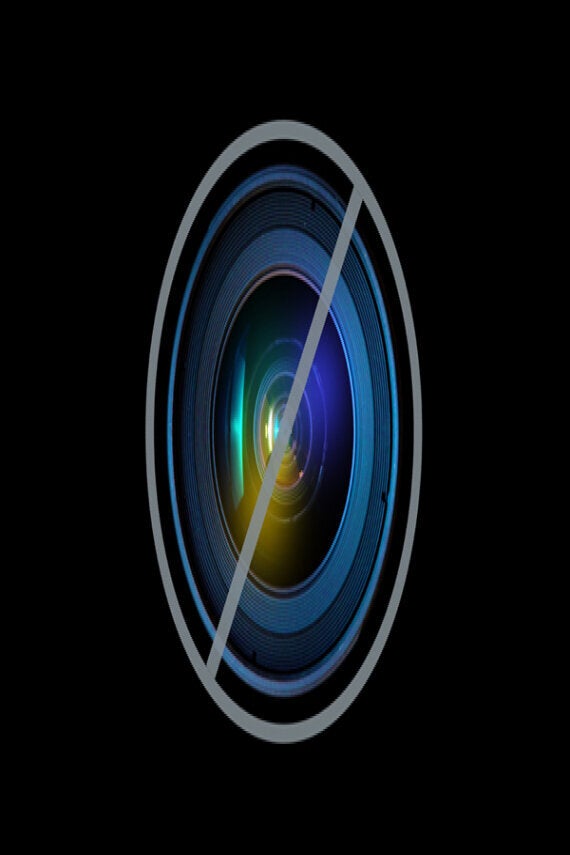The art world is one where gender equality isn't an issue anymore, right?
Tracey Emin and Gillian Wearing are prominent art figures in the public eye, Dame Liz Forgan has chaired the Arts Council England since 2009 (if we gloss over the fact Jeremy Hunt asked her to step down earlier this year). Half of this year’s Turner Prize nominees are women. Central St Martins’ art school claims to have a “50/50” gender ratio of students. Glass ceiling? What glass ceiling?
That was the attitude the gender equality campaigners East London Fawcett Group encountered during their ELF Talks Art meeting last October - an oversubscribed event that resulted in the group launching a campaign to discover the true extent of sexism in the arts.

Left to right: ELF organisers Rachel Blake, Hannah Philp and Gemma Rolls-Bentley
Because while it may appear that men and women had the same standing in the visual arts in 2012, the statistics show otherwise.
The galleries chosen to show at this year’s 10th Frieze Art Fair, the annual event that puts London at the centre of the global contemporary art world, were assessed by the ELF for the ratio of male and female artists they represented. Their findings were troubling: of the galleries featured, 67% represent less than a third female artists, and a paltry 1.5% have more women than men on their books.
These are the first published results from the ELF Great East London Art Audit, an on-going research project from the group to investigate gender ratios in galleries. April 2013 will see a full release of the Audit’s statistics, which are being gathered by volunteers going into galleries and, more recently, a team of unpaid statisticians.
The two ringleaders of the group are Hannah Philp and Rachel Blake, who brought their desire to bring a non-prescriptive, friendly Feminist force for good to their community into action with a launch event in May 2011.
Meeting Hannah, Rachel, and the director of the ELF Art Campaign, Gemma Rolls-Bentley to discuss their project, it's clear we’re a long way from aggressive gender politics. These are women who have professional backgrounds in City finance and local government as well as the gallery scene - they want positive gender equality, and they’re on a collaborative mission to do it - without an ironic cupcake in sight.
Hannah tells me that the arts have “always been on the agenda” for the ELF, which is also looking into equality in sports and advertising. It is, she says, "where the greatest challenge remains for feminism because the assault is often intangible and not necessarily unlawful” - it’s easier to challenge an employer who unlawfully sacks a pregnant woman than address patronising depictions of women in the media or films.
It may often seem that the arts are on the periphery of society rather than the force which defines it. But the group say they take inspiration from the artistic director of Southbank Jude Kelly who said: "if culture is the expression of who we are, and if women's stories are tiny on that landscape, you're continuing the idea that women don't really play a role in the world. And that's bad for everybody."

Visitors enjoy Frieze 2012
The tininess just has to be established first. Hannah continues: “The longer this campaign’s gone on, the more we’ve discovered how deep the misogyny and inequality run in the arts.”
Outlining the Audit’s plans, Gemma says, “we decided that to convince people that there is still inequality in the arts, we need to use a combo of hard stats and personal experience. Those two things together can build a successful campaign.”
The Audit’s findings will contribute to a small catalogue of other reports into the issue. Their predecessors include the efforts of anonymous New York feminist 80s art group Guerilla Girls, whose Bedside Companion to the History of Western Art (a rewriting of art history to include previously unmentioned female artists) is an inspiration for the group.
In 1985 the Guerilla Girls did a similar survey to the Audit, assessing the artists on show at an exhibition called An International Survey of Painting and Sculpture at New York’s Museum of Modern Art. It was a show that aimed to show the most significant contemporary art in the world - not dissimilar to Hannah’s description of Frieze as “a snapshot of the most relevant contemporary artists”. They found that of 169 artists, only 13 were women. That’s less than 8%.
There are, however, signs that the tide is beginning to turn.
In 2008, Laura McLean-Ferris, ArtReview Editor in Chief (the magazine that placed a woman at the top of its influential Power 100 in its November 2012 issue), found that 11.8% of solo exhibitions on during Frieze week were female solo shows. That’s over doubled to 23.3% this year. She comments, “It's good to see that things are changing slowly. I do believe that things will improve over time.”

Artistic Director Carolyn Christov-Bakargiev is top of this year's ArtReview's Power
I also asked London’s biggest historical galleries about gender equality in their collections and, while the National Gallery were unable to respond, the Tate and National Portrait Galleries provided interesting figures.
The male to female curator ratio at NPG’s recent and forthcoming exhibitions is 11 women to 8 men, with two major shows on specifically on women (The Queen: Art and Image and First Actresses: Nell Gwen to Sarah Siddons) and six on men. Of the eight recent portrait commissions their press team listed, five of them were of prominent women.
The Tate said, “While we do not operate positive discrimination in relation to women artists we are all, at Tate, very concerned to address areas where, historically, women artists may have been unduly neglected.”
This is evidenced by their upcoming exhibitions featuring Ellen Gallagher and Mira Schendel, and Tate Britain’s current Pre-Raphaelite exhibition including female artists who have been overlooked in the past, such as Elizabeth Sidall or Dora Brett.
It’s a solid start, and good news for the ELF, who are insistent on the positivity of their campaign - there’s no Suffragette-style canvas slashing here. Hannah explains, “one thing we absolutely do not want to do is name and shame the galleries and institutions. What we want to do is celebrate the ones that are being successful, and are supporting women and celebrate the female artists that have achieved a certain level of success.”
“We’re trying to achieve balance: to get the data that will demonstrate our argument, but then really celebrate where things are being successful.”
Frieze were unable to comment when these statistics were put to them. They did point out the Spotlight at Frieze Masters - an area of the fair which showcased more historic work from the galleries involved - “had a strong female presence and focus on feminist practices”.
The danger, as McLean-Ferris puts it, is that the art world loses momentum and falls back into old practices.
“For such a forward-thinking part of society it's a shame that there's still so much inequality,” she says.
“But much of it is historic and the roots of the trouble are in another generation. It's important that in this time, for the groups of artists that are emerging now, that we don't allow those patterns to repeat, and don't, by some strange default position, look to male artists to point the way forward.”
Art may not feel like a priority to many feminists still fighting for equality on other fronts. But a tiny 3.7% of the galleries at Frieze equally represented men and women. Figures like these reveal inequality that is even worse for women than it is in the boardroom, and yet few people are talking about art as a contemporary feminist issue. If the ELF Audit is anything to go by, hopefully that will change soon.